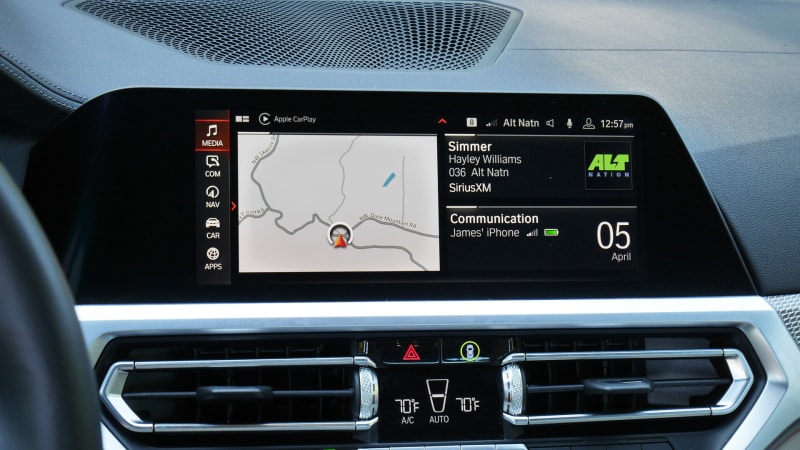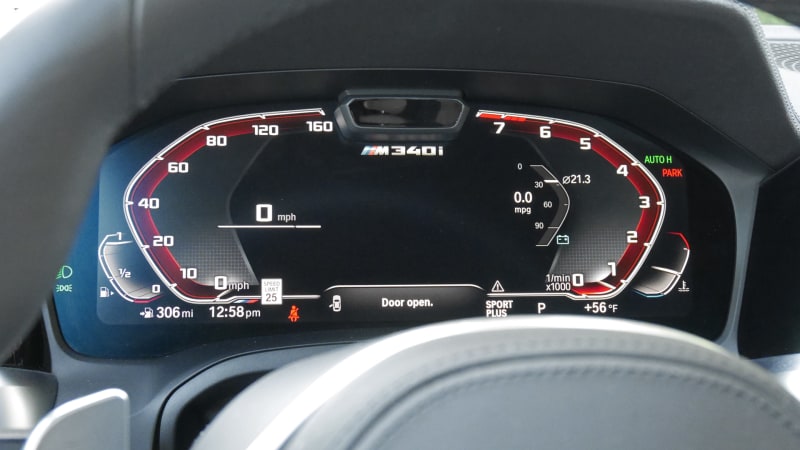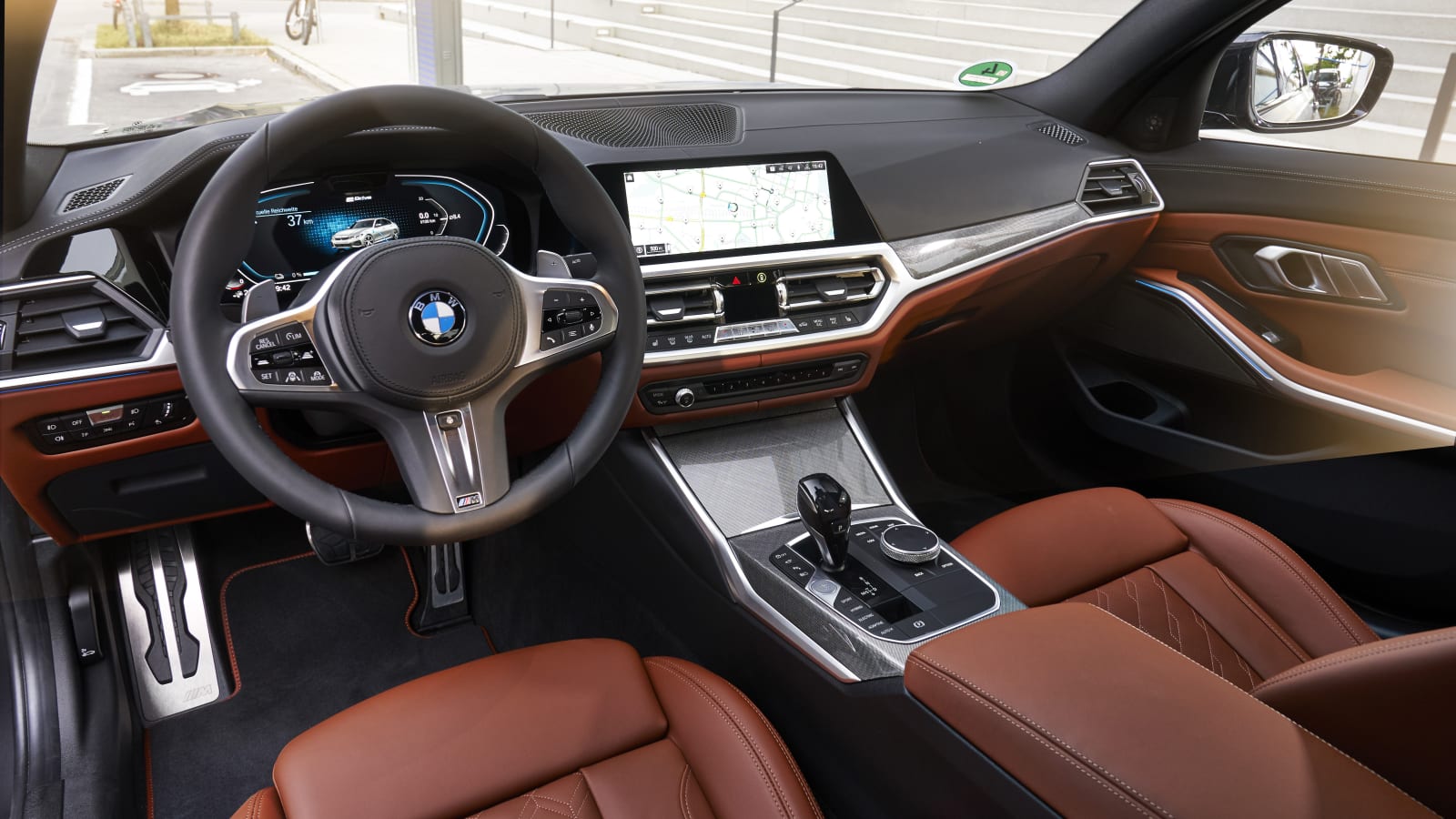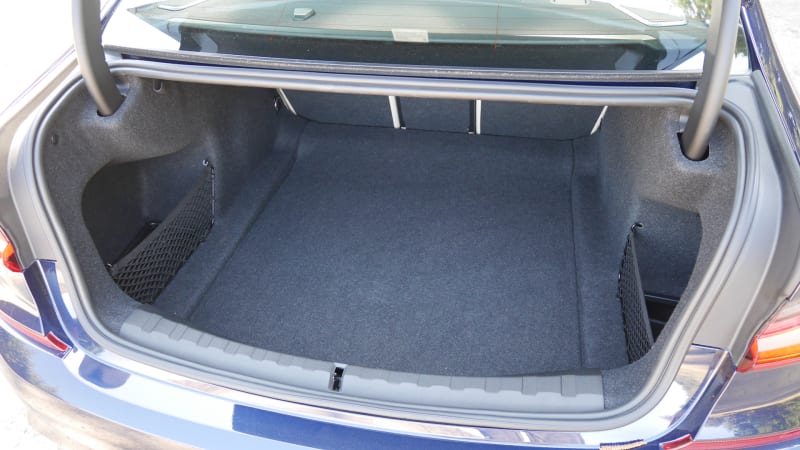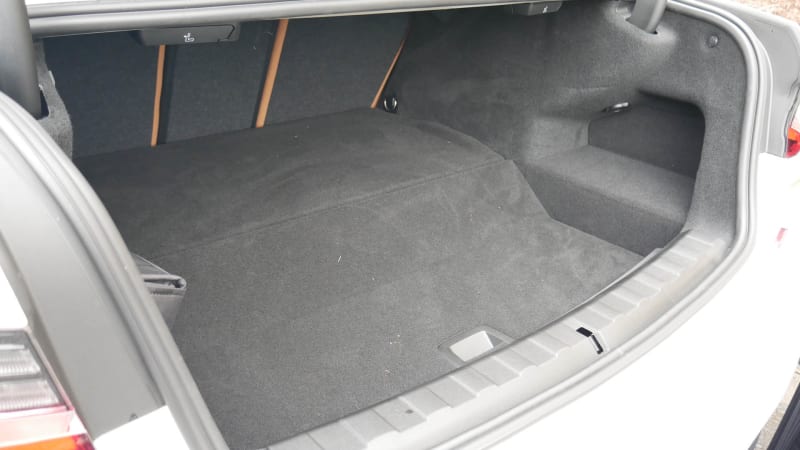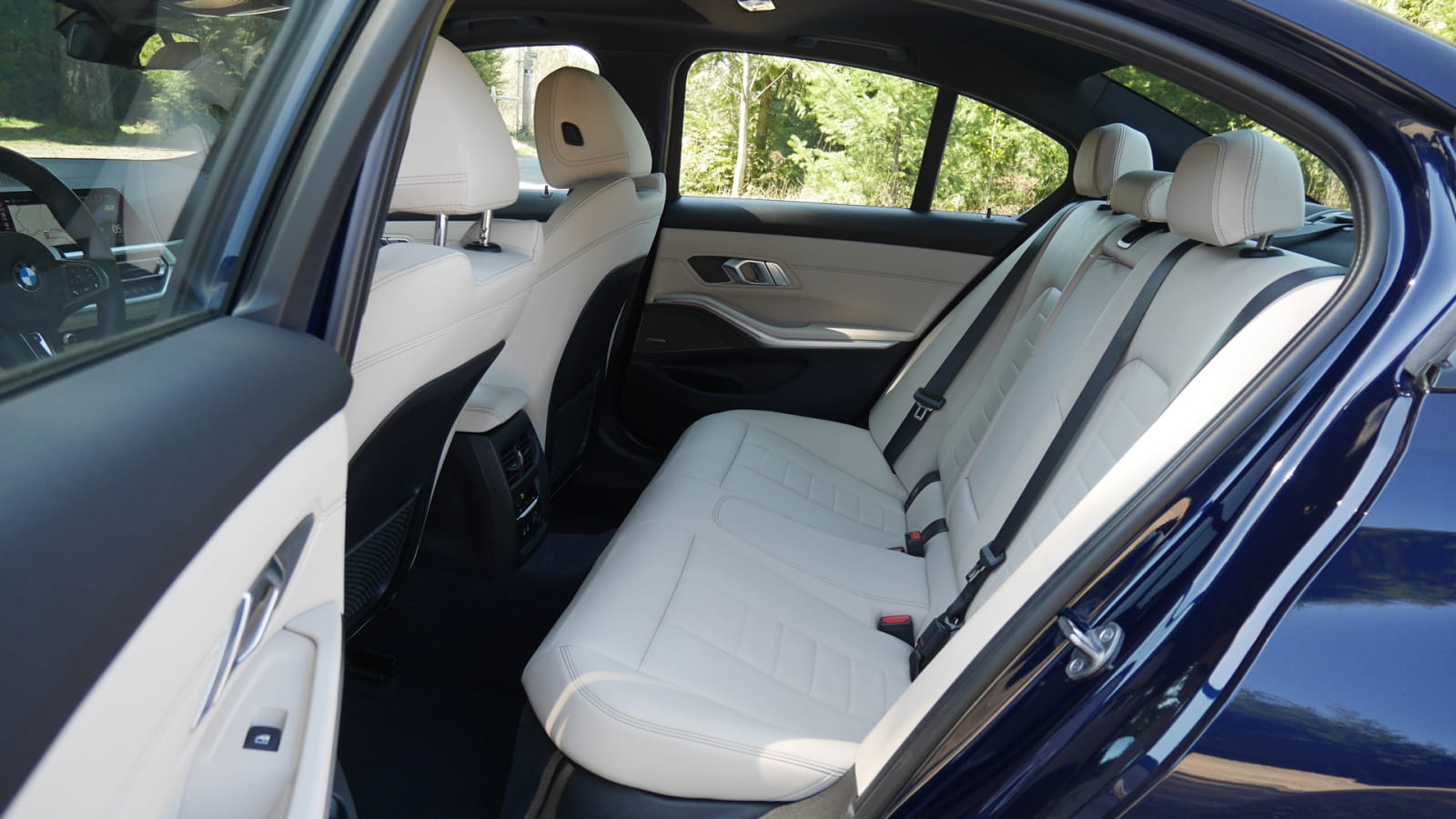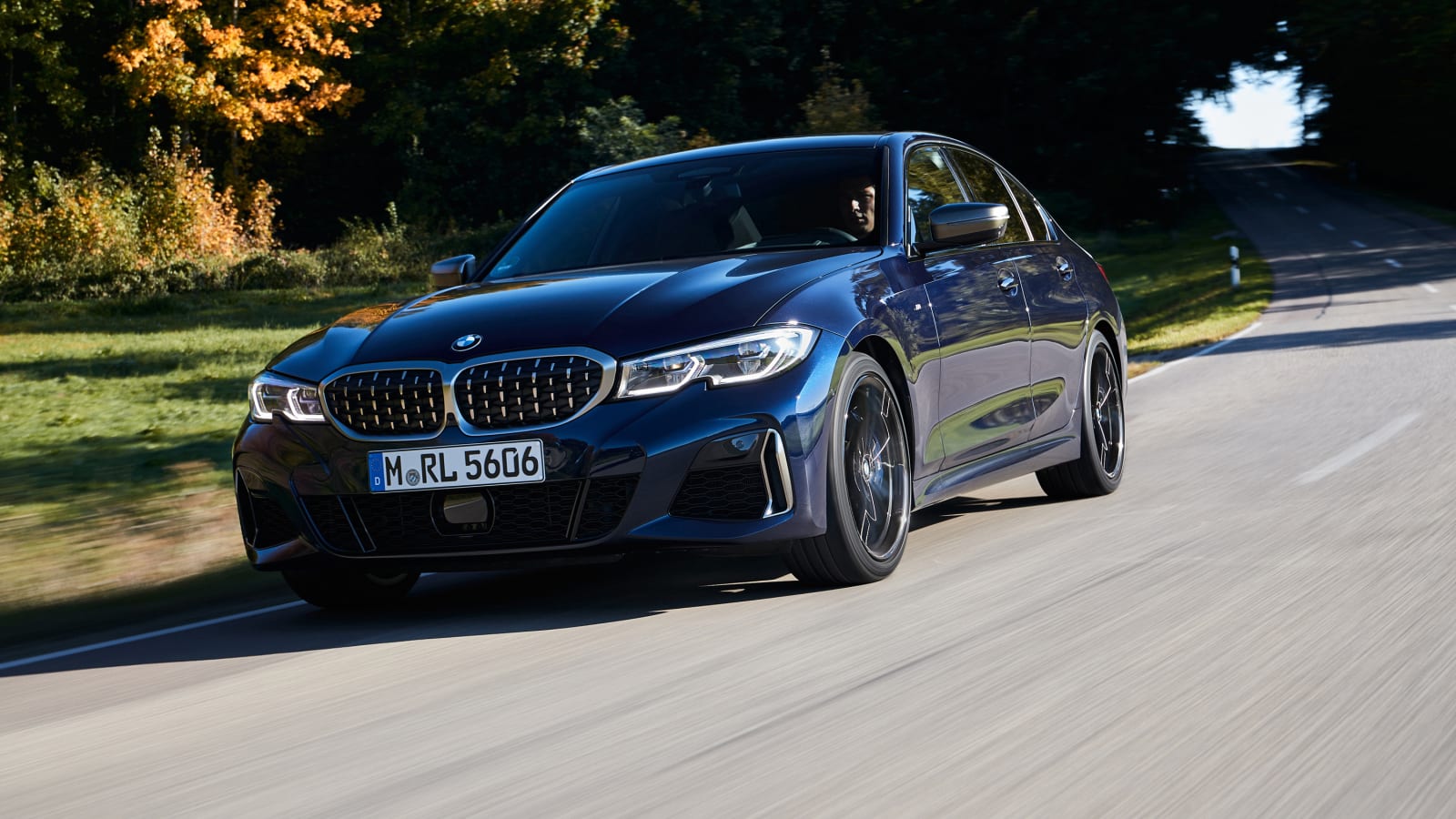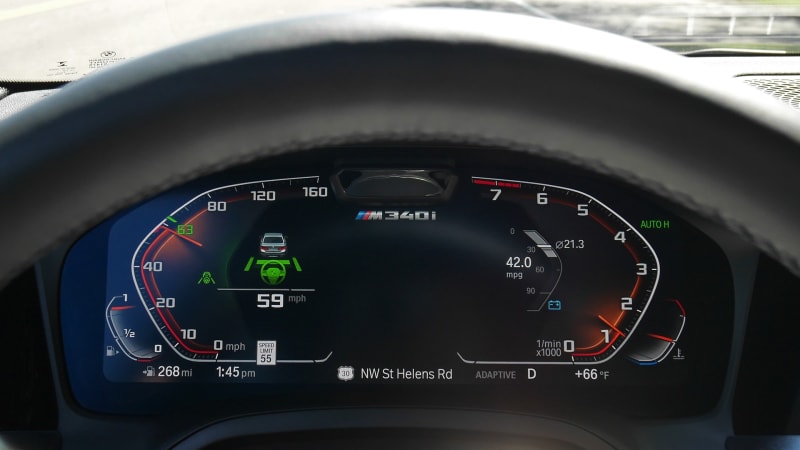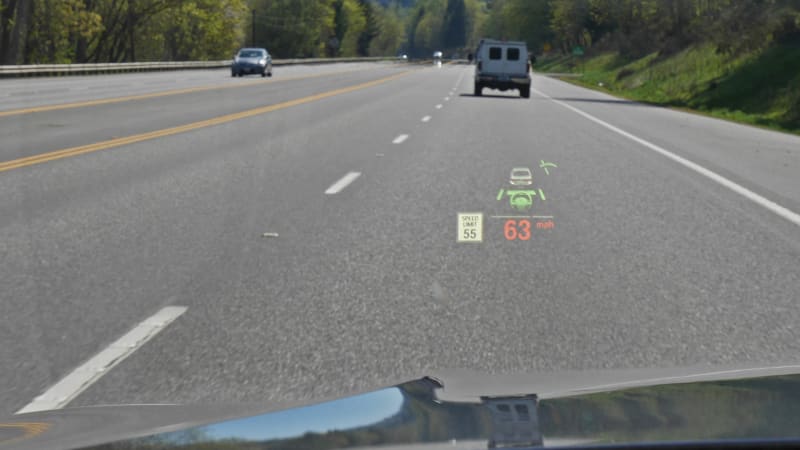The BMW 3 Series used to be a crown jewel of the automotive landscape. It earned so much praise and won so many comparison tests that car journalists like us were falsely accused of being on the take. Sorry, the cars were just that great. In recent years, though, the 3 Series lost its luster, and it had nothing to do with fictional stacks of unmarked bills no longer showing up on ink-stained doorsteps. Quite simply, the last 3 Series was less involving and fun to drive, while its well-built-but-drab interior didn’t exactly wow luxury shoppers. Tougher still, it faced better competition than ever before, competitors that started to clear the lofty bar set by past 3 Series.
So that’s the history lesson. The 2021 BMW 3 Series is now into its third year of a redesign that saw it return mostly to dynamic form, albeit in a way more relevant for the 2020s where technology, refinement and efficiency are far more important. To those ends, the 3 Series infotainment system is among the best in the luxury realm, it has a shockingly comfortable ride for such a sporting car, and its fuel economy figures read like those of a modest compact car despite boasting big-time power and torque. The new-for-2021 330e plug-in hybrid and the M340i’s new mild-hybrid system bolster that case even further.
So is today’s 3 Series a crown jewel again? Well, those competitors are only getting tougher, and their collective turf is being rapidly taken over by crossovers. Still, should you want to stick with sport sedans (and we’re right with you), there’s no better place to start your search than the BMW 3 Series.
What’s new for 2021?
The 330e plug-in hybrid model debuts two years after the rest of the 3 Series line was unveiled (you can consider the new 2021 M3 as an addition as well). There are also some key updates elsewhere. The M340i gains a 48-volt mild-hybrid system, improving fuel economy ever so slightly and smoothing out the automatic stop/start system. Output and acceleration remain the same. There have also been a number of changes made to option availability and package content, which is normal after a new model’s first year on the market. Standard equipment now includes the previously unavailable Android Auto as well as the previously optional satellite radio, proximity entry, automatic high beams and the Connected Package Pro suite of remote services.
What’s the 3 Series interior and in-car technology like?
The latest 3 Series interior sacrifices some ergonomic functionality in favor of a more eye-catching design with richer materials. It was a good call, as the 3 Series now looks and feels more luxurious, especially when compared to segment standouts such as the Mercedes C-Class, Audi A4 and Volvo S60. At the same time, functionality hasn’t been written off – controls are still easily reached and there’s ample storage space. We go in-depth about the 3 Series interior in the video above and in our 3 Series Interior Driveway Test.
The 3 Series can be optioned with the latest BMW iDrive 7.0 tech interface, which we review here. We generally like it, especially the myriad ways to accomplish the same tasks – knob, buttons, touchscreen, voice controls. Basically, it allows you to operate the car as you’d prefer. That said, iDrive is still pretty complex, and some may find its menu structure a little overwhelming, especially at first. Android Auto is also added for 2021, and we’re happy to report that we haven’t had the same frustrating connection issues with Apple CarPlay in recent BMW test vehicles.
How big is the 3 Series?
This is the biggest 3 Series ever, growing to proportions that 20 years ago would’ve rivaled the 5 Series. While this isn’t great news for its role as a sport sedan, it does improve its luxury credentials by providing an impressive amount of backseat legroom. Four adults can happily fit aboard, even with tall occupants seated up front. You’ll still find far more space in a non-luxury sedan like the Honda Accord or Mazda6, but the sacrifice to luxury has definitely been lessened.
The same can be said for trunk space, even though we discovered in our 3 Series luggage test that BMW’s cubic-foot trunk measurement inflates the car’s actual space relative to competitors. Those interested in the 330e plug-in hybrid should also be aware that its trunk space takes a considerable hit. The battery effectively raises the floor by maybe 40% between the wheels with the usual trunk height behind. A trick floor panel provides the option of max capacity or a flat floor. You can see the difference between the two trunks below (M340i left, 330e right).
This also seems like a good place to note that there is now only one 3 Series body style. The wagon is not sold in the United States, and the oddball hatchback 3 Series Gran Turismo has been discontinued. Of course, the redesigned 4 Series is effectively its coupe and convertible versions.
What are the performance and fuel economy?
Each BMW model is tied to a different engine. The word “xDrive” tacked onto the end indicates the presence of all-wheel drive, versus the standard rear-wheel drive. The letter ‘i’ effectively indicates gasoline, while ‘e’ is for plug-in hybrid.
The 330i has a 2.0-liter turbocharged inline-four that produces 255 horsepower and 294 pound-feet of torque. Like every 3 Series, an eight-speed automatic is mandatory; there is no manual available. Tear. BMW says it’ll go from 0 to 60 mph in 5.6 seconds with RWD or 5.3 with xDrive. That’s a speed realm once occupied by the M3, so not too shabby for the base engine. Nevertheless, fuel economy is exceptional at 26 mpg city, 36 mpg highway and 30 mpg combined with RWD. Subtract 2 mpg with xDrive.
The M340i has a 3.0-liter turbocharged inline-six, which for 2021 features a 48-volt mild-hybrid system that improves efficiency and makes the automatic stop/start system smoother. Fuel economy effectively improves by 1 mpg to 23/32/26 mpg with RWD and 22/31/25 with xDrive. Output remains the same with 382 hp and 369 lb-ft of torque, as do 0-60 times of 4.4 seconds with RWD and a ridiculous 4.1 seconds with xDrive. You can hear what that sounds like in the video below.
Also new for 2021 is the 330e plug-in hybrid. It has a 2.0-liter turbo inline-four paired with an electric motor and batteries. Its combined output is 288 hp and 310 lb-ft of torque. BMW says it’ll hit 60 mph in 5.6 seconds with RWD, but it oddly gets slower with xDrive despite the increased grip. EPA range estimates indicate it’ll go 22 miles on a charge, which is typical for this type of plug-in hybrid. If you don’t plug it in, the rear-drive 330e actually gets worse fuel economy than the gas-only versions, but that’s really only an issue if you’re on a road trip and/or can’t recharge for some reason. In 286.5 miles of driving with two recharges, we averaged 66.6 mpg from the 330e.
What’s the 3 Series like to drive?
The previous-generation 3 Series rightly caught flack for losing the driver-focused mojo that had made its predecessors famous. It just wasn’t as good to drive. This latest version rights the ship, to a point. The steering in particular has improved, imparting more information to the driver’s hands and gaining an increased-yet-uncontrived amount of effort. However, there’s still a certain numb, artificial feeling present and in general, the steering is still not the benchmark it once was.
The handling may be, however, especially with the M340i. It feels like a proper driver’s tool with an impeccably composed suspension that allows you to maintain rapid, effortless speed. It doesn’t feel particularly light or playful – like other BMWs, it’s going for speed with confidence and competence – and won’t necessarily delight with its responses. If that’s important to you, visit the Alfa Romeo store.
The upside of the 3 Series losing its edge over the years is that it’s a quieter, more comfortable car more in keeping with a luxury sedan than a sport sedan. We were frankly stunned at how beautifully a 330e test vehicle with 19-inch wheels and the adaptive M suspension sopped up brutal pavement. This, despite still handling with the poise described above. Truly impressive.
What more can I read about the 3 Series?
2019 BMW 330i First Drive
Our first review of the current-generation 3 Series and specifically the 330i. This includes more information about its design, engineering and what changed.


